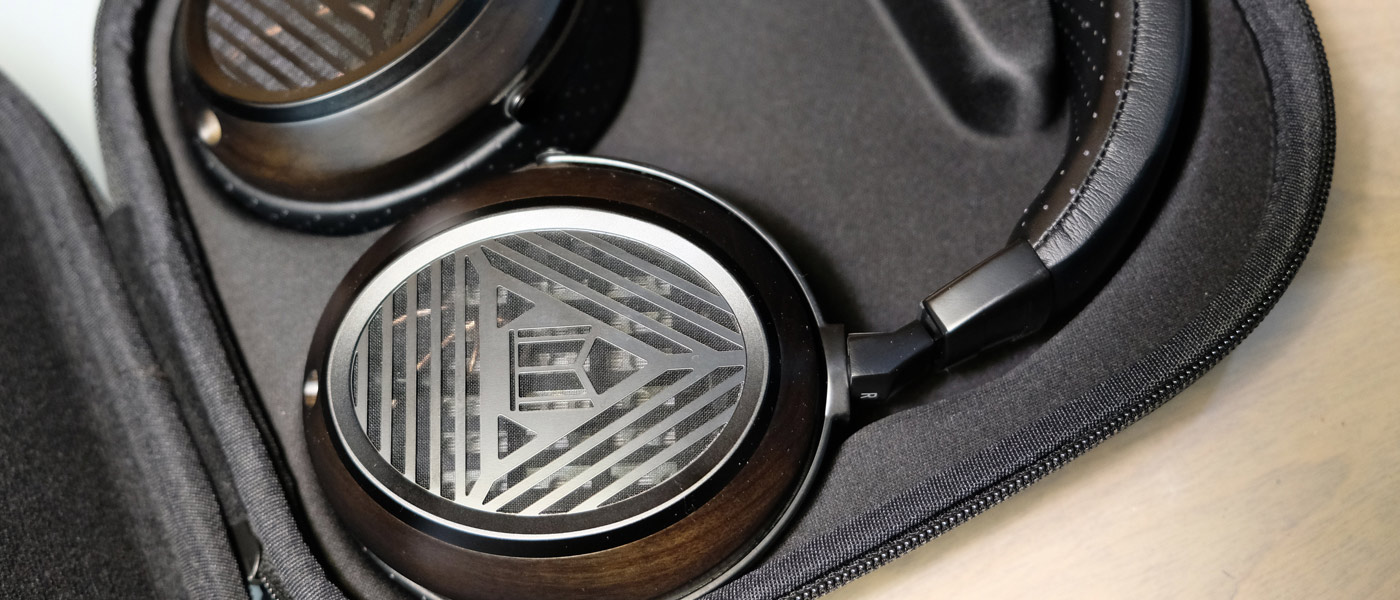See the full review for the iFi Aurora All-in-One Music System
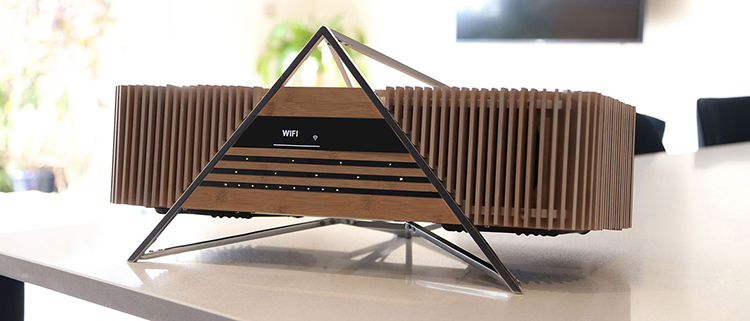
The Aurora’s looks are about as unique as anything else on the market. The looks, something I’ll get to in-depth in my review, are quite divisive as well. It got me curious. If it sounds as good as it looks, and its looks are unique, then how good does it sound?
Well first is the design. The Aurora is clad in bamboo with an A-shaped aluminum frame. The design of the Aurora design is striking. iFi intends it to mimic the grand scale of Japanese architecture – crisp, clean lines intertwined with a hint of vintage. iFi’s French designer, Julien Haziza, “…drew inspiration from Japanese industrial designers and architecture – namely Shigeru Ban, Tadao Ando, and the Omotesandō and Harajuku districts in Tokyo.”
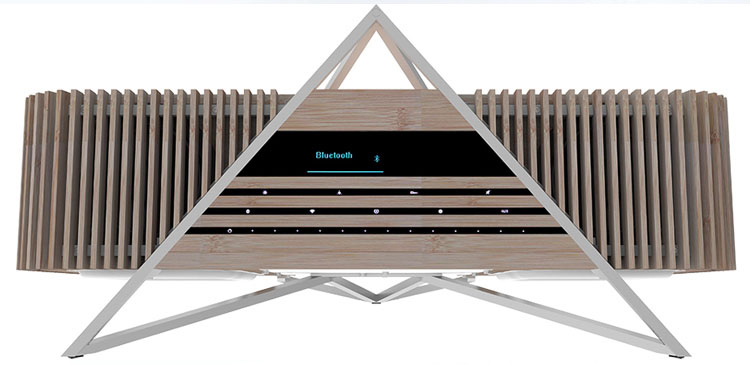
On to the important bits, the inside. And, there’s a lot. Firstly, the Aurora is driven by PureEmotion®, iFi’s proprietary, trademarked amp technology. It is a hybrid circuit design that comprises several key stages. The first of these – the preamp stage – incorporates “…a Russian 6N3P valve (visible through a window next to the OLED display). This takes the analog audio signal delivered by the Aurora’s DAC circuitry – based around a chip from ESS Technology’s renowned 32-bit Sabre DAC family, then the resulting low-level signal passes to the power amp stage or ‘current multiplier circuit’.” Aurora’s circuit switching frequency is fixed at around 1.5MHz, which is well beyond the audible frequency spectrum. This results in “…a high level of efficiency, multiplying the current supplied by the valve several thousand-fold, whilst maintaining far greater linearity and lower noise than typical switching amplifiers.”
The PureEmotion® amp stage claims delivery of a total of 320 Watts to power six custom-made drive units. The four main drivers—two front-firing and two side-firing—are 4.5″ (120mm) cones made from coated long-fiber paper, a material selected for its optimal balance between stiffness and self-damping characteristics. These are coupled to a large magnet, a basket that resonates above the audible range and extensive measures to ensure excursion is controlled and damped mechanically, so that clarity and control are maintained even at high volume levels.
Secrets Sponsor
Unusually, these main drivers are deployed in a wide-bandwidth role to cover the vast majority of the audible frequency spectrum, rolling off towards very low and very high frequencies. The drive units’ design, together with the inert nature of Aurora’s housing – stiff, well-braced, naturally sound-absorbent bamboo with strategically placed damping material – enables a flat frequency response from around 60Hz to 8kHz. Avoiding the need for a crossover to hand over from one drive unit to another at critical frequencies enables excellent phase response through the midrange.
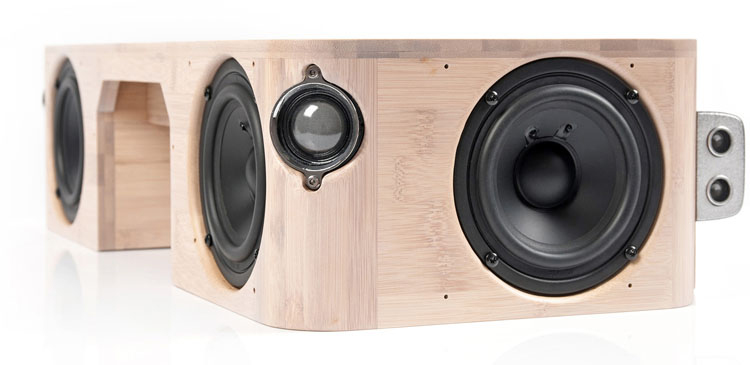
Two 1.1” (28mm) silk dome tweeter, one at each side, cover frequencies from 8kHz to 35kHz. The thinking is that since the treble region is considered to begin at around 5kHz, and the limits of human hearing extend to about 20kHz, the Aurora’s high-frequency drivers behave more like super-tweeters than traditional tweeters. With a simple first-order crossover for the smoothest-possible transition and a shallow waveguide to provide time-alignment, these tweeters not only deliver high-frequency sounds such as cymbals but are also critical to Aurora’s spacious soundstage.
Lastly, a pair of down-firing, 4.5” x 8” (120mm x 200mm) steel passive radiators are located on the underside of the cabinet. The diaphragms are formed from a composite of carbon, iron and ethylene-vinyl acetate – a well-damped material enabling the correct resonant frequency to be obtained from a diaphragm of appropriate thickness. This is combined with a self-centering, double-ribbed rubber surround, negating the need for a basket.
The Aurora eschews the use of onboard DSPs as it is believed to be artificial, and detracts from the sound quality. The Aurora operates solely in the analog domain. Instead, two more proprietary technologies are employed to augment the sound. SoundSpace® adjusts the level of output from specific drivers at certain frequencies. While TrueBass® delivers genuine bass with depth and definition with ‘dual-level depth control’ by incorporating the two aforementioned, down-firing bass radiators allowing you to adjust the bass to your taste.
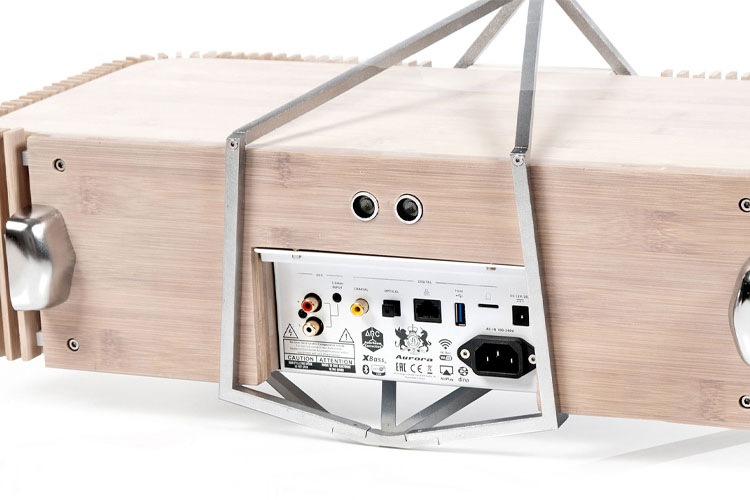
Also onboard is Auto Room Tailoring (ART)®, the Aurora can auto-configure the speaker array according to its position in the room. The Aurora adapts to the way you want to use it. Place it under a TV, connect via Bluetooth® or optical cable and use it as a stylish soundbar. And stream your favorite music. Press the ART® button, and six sensors measure the distance to the surrounding walls using ultrasonic sound. Then, “…a 32-bit ARM Cortex microprocessor adjusts the output from the speaker array to precisely tailor the musical performance. All the adjustments are made strictly in the analog domain, without relying on DSP or feedback in the manner of many other room correction systems.”
Here’s a brief rundown of the connectivity. Again, there’s a lot.
Secrets Sponsor
Aurora uses the latest version Bluetooth5.0® with the newest Qualcomm 5100 series chipset. Conversion is handled by an ESS Sabre DAC. All current and future Bluetooth® audio formats are supported including aptX and aptX HD, LDAC and HWA, hi-res Bluetooth® codecs created by Sony and Huawei respectively. Also, Apple’s favored format, AAC. Networked audio is possible with playback from NAS or server, Airplay, streaming audio (Spotify/Apple Music/Amazon Music/TidalHiFi/Deezer etc.).
Let’s not forget the physical connections, there are: optical, coaxial, USB and Ethernet inputs for digital, RCA and a 3.5mm socket provide an Alexa/analog input. There are even slots for audio stored USB and on micro SDHC cards (44.1kHz/16Bit – 192kHz/32Bit).
You can link several Auroras via Wi-Fi to create a multi-room system, playing in-sync or individually. Whether you stream from Spotify or Tidal, or surf the infinite number of internet radio stations via TuneIn, the Aurora has your music needs covered. Control is handled by the MUZO player app.
Does all this design and technology add up to audio goodness? I’ll weigh in on it all in my review. Keep your eyes on this space.
See the full review for the iFi Aurora All-in-One Music System


